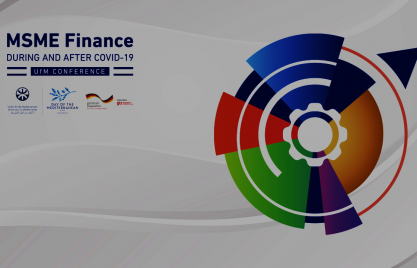A major step to bridge the gender gap in financial inclusion is to incorporate sex-disaggregated data in a set of main statistics and to develop and monitor key indicators in order to be able to put in place effective plans for financial inclusion of women.
Information on potential and current target groups, providers, channels, and products and services is quite important for regulators to better understand the effectiveness of policies and regulations for financial inclusion. At the national level, there is a need to collect and analyze sex-disaggregated data in order to monitor the progress in achieving national targets and to enable market development and outreach by the private sector. According to Dr. Tukiya Kankasa-Mabula, Deputy Governor of the Bank of Zambia and Chairperson of the Gender and Women Financial Inclusion Working Group within the Alliance for Financial Inclusion (AFI), “the collection and promotion of sex-disaggregated data is an important component of the road map to gender equality in financial inclusion” as outlined in the Denarau Action Plan.
Demand side data disaggregated by sex can help regulators to better understand women needs for financial inclusion, to develop and monitor progress in national strategies. Besides the World Bank Findex data, some countries have developed their own national surveys in order to have a deeper understanding of client behavior and financial literacy levels. In Zimbabwe, for example, an in-depth analysis of sex-disaggregated data from 2011 to 2014 helped the Reserve Bank in understanding the demand-side barriers and provided insights critical in formulation of financial inclusion policies targeting women.
Recognizing the value of sex-disaggregated data, regulators started to request financial institutions to report such data from the supply side. Although, some financial institutions started to do so, the data gap is still significant at both the global and national levels. Despite the Financial Access Survey (FAS) by the IMF and other national supply-side surveys especially in low-income countries, some countries do not have supply side data specific about financial inclusion of women either because of the cost of collecting new data or due to some regulatory issues. Moreover, financial institutions might face challenges in reporting sex-disaggregated data because of their internal policies and procedures of collecting and processing such data or the limited capacity of their management information system.
Field research and data exercises are underway in the MENA, including a supply side study Egypt and full-fledged financial inclusion studies in Jordan and Palestine, in line with global trends. The collection and promotion of sex-disaggregated financial inclusion data using adequate tools will help to inform the development of more effective national financial inclusion strategies and to accelerate women’s financial inclusion.
Read Arabic version here
By Ozaina Aljundi, Central Bank Advisor, Promotion of the Microfinance Sector in the MENA Region (MFMR)
This blog post is brought to you by the Arabic Microfinance Gateway and GIZ under their Outreach Partnership for the Regional Policy Forum on Advancing Women’s Financial Inclusion in the Arab World. The event was hosted by the Central Bank of Jordan, the Arab Monetary Fund, and GIZ from November 22-23, 2016 at the Dead Sea, Jordan with the support of AFI, the European Union, CGAP, and New Faces New Voices.



